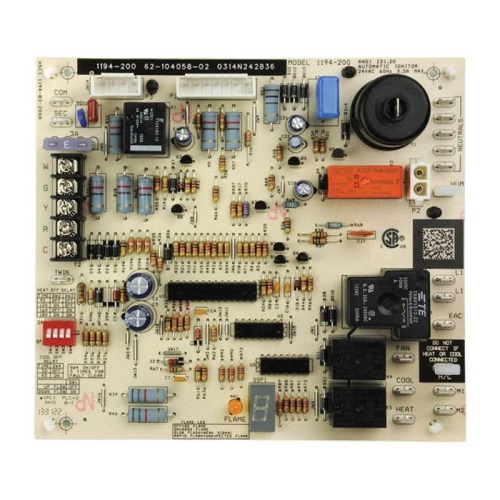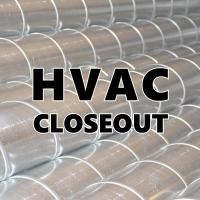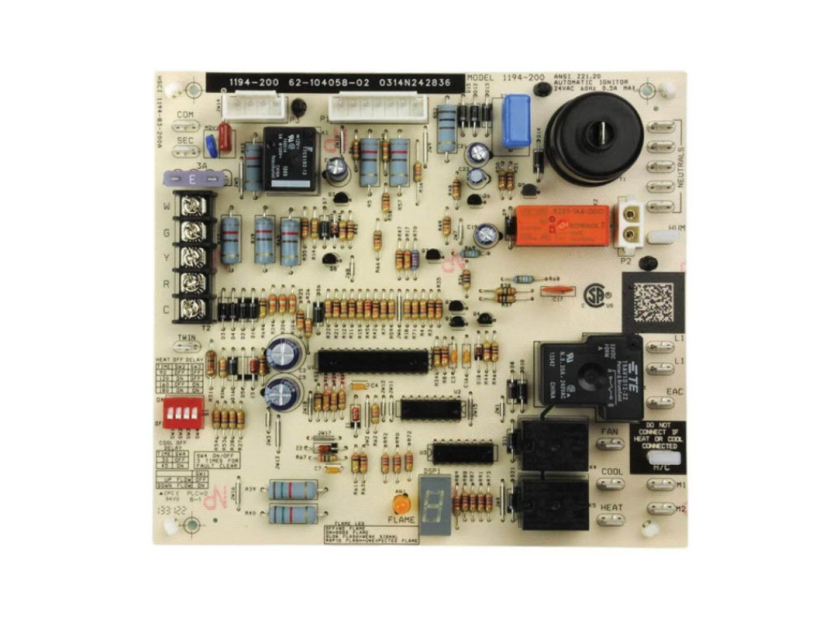I've fielded quite a few calls on the topic of no spark for ignition this winter.
Usually, the call is made after the tech has replaced a working IFC (circuit board), then the igniter is changed, maybe even a flame sensor (which makes no sense as the furnace never lit!) and the same symptoms appear. The furnace advances through its normal process until a spark is needed and there is none.
Let's look at this a bit closer. In the photo in the upper right hand corner where the wire for the spark igniter would attach. See how it's labeled as - Automatic Igniter 24 vac .5 amps. ? Most technicians think the spark is generated on the 120Vac side...it's not!

Now we need to look at what loads are on the low voltage circuit BEFORE the blower is needed. The thermostat( if there is a common wired to it), The coils on both the IDR ( inducer motor relay) and GV ( gas valve relay), and finally the gas valve itself.
The gas valve has a solenoid in it. When the plunger locks or gets jammed the valve will rob power (amps) from the 24 Vac circuit in an effort to open, this will prevent the igniter from generating any spark. In some rare cases, the 3 amp fuse may blow. There may also be false pressure switch, limit and rollout codes as those inputs are all the 24Vac circuit too.
Here are simple checks to perform if there is no spark. Unplug the yellow and blue wires off the gas valve, initiate a call for heat, Have spark?....the gas valve has failed. Still no spark? Unplug the igniter wire at the board, ground a piece of insulated wire to the chassis cabinet, hold the other end of the wire with insulated pliers with the bare end of wire 1/8" off the terminal. Initiate a call for heat and look for an arc...No arc? Replace the IFC. If an arc is present replace igniter wire and spark igniter.
























